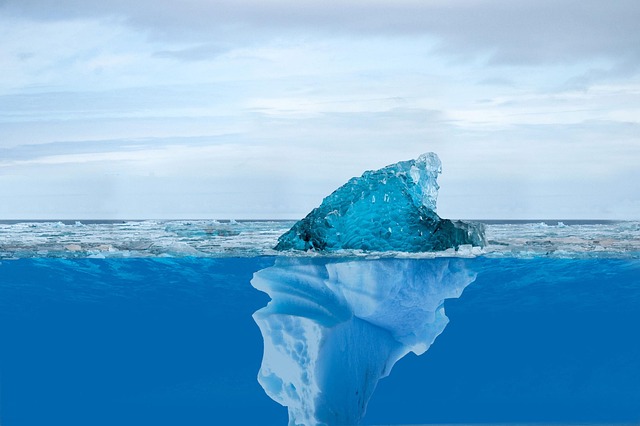Migraines significantly impact daily life due to their intense pain, lasting from hours to days, and associated symptoms. Traditional treatments have side effects or are ineffective for many. Cryotherapy, using cold compresses, offers a promising alternative by reducing inflammation, constricting blood vessels, and numbing nerve endings for rapid headache relief. The benefits of cold compresses for headaches provide a non-invasive, safe solution with minimal risks, making cryotherapy an attractive option for chronic migraine sufferers to improve quality of life.
“Discover a revolutionary approach to managing migraines with cryotherapy, an advanced solution that’s gaining traction in modern medicine. This therapy, involving exposure to extreme cold, offers a unique and potentially life-changing option for those plagued by chronic headaches.
In this article, we delve into the world of cryotherapy as a treatment for migraines, exploring its origins, the science behind it, and the compelling benefits of using a cold compress for headaches. Prepare to uncover a new frontier in headache relief.”
Understanding Migraines and Their Impact
Migraines are a complex and often debilitating neurological condition characterized by recurrent moderate to severe headaches. They can be triggered by various factors, including hormonal changes, certain foods, stress, lack of sleep, and environmental stimuli. During a migraine attack, sensitive nerve paths in the brain and blood vessels constrict and then dilate, leading to intense pain that can last from hours to days. Symptoms may also include nausea, vomiting, sensitivity to light and sound (photophobia and phonophobia), and visual disturbances known as aura.
The impact of migraines extends beyond physical discomfort. They can significantly affect daily life, work performance, and overall quality of life. Chronic migraine sufferers often struggle with fatigue, difficulty concentrating, and emotional distress. Traditional treatments include medications like triptans, anti-inflammatory drugs, and preventive therapies aimed at reducing the frequency and severity of attacks. However, many individuals seek alternative solutions due to medication side effects or limited efficacy. Here’s where cryotherapy, specifically using cold compresses, emerges as a potential game-changer in migraine management, offering promising benefits such as reduced inflammation and pain relief.
Introduction to Cryotherapy: A Cold Compress Solution
Cryotherapy, or cryo-treatment, has emerged as an innovative approach to managing migraines and intense headaches. At its core, this therapy involves exposing the body to extreme cold temperatures for a short period, offering a unique and effective solution to alleviate pain. The concept is not far off from using a cold compress on a throbbing head; however, the benefits extend far beyond temporary relief.
When applied to migraines, cryotherapy aims to disrupt the nerve signals responsible for transmitting pain. The sudden exposure to extreme cold constricts blood vessels, reduces inflammation, and numbs the affected areas, providing rapid and effective headache relief. Unlike traditional medications that only mask symptoms, cryo-treatment targets the root cause, making it a potential game-changer for those suffering from chronic or severe migraines.
The Science Behind Cryotherapy for Headaches
Cryotherapy, or cold therapy, has emerged as an innovative approach to managing migraines and other severe headaches. The science behind this method revolves around the powerful anti-inflammatory and pain-relieving properties of cold temperatures. When a cold compress is applied to the head or neck area, it constricts blood vessels, reducing blood flow and inflammation in the affected region. This process helps alleviate pressure and pain associated with migraines.
The benefits of using cold compresses for headaches have been well documented. Cold therapy can provide rapid relief by numbing the nerve endings, blocking pain signals to the brain, and reducing muscle spasms. Many migraine sufferers report significant improvements after just a few minutes of cryotherapy treatment, making it an attractive alternative or adjunctive solution for those seeking more effective headache management.
Exploring the Benefits and Potential Risks
Cryotherapy, involving exposure to extreme cold, has emerged as a novel approach for migraine treatment, offering potential benefits as an advanced solution. The benefits of cold compresses for headaches have been well-documented; cold temperatures help reduce inflammation and constrict blood vessels, providing significant pain relief for migraine sufferers. This non-invasive method is particularly attractive due to its swift action and minimal side effects compared to traditional medications.
However, like any treatment, it’s essential to consider the potential risks. Prolonged or excessive cryotherapy sessions may lead to skin irritation or temperature-related injuries. Individuals with certain medical conditions, such as Raynaud’s disease or severe cardiovascular issues, should exercise caution. Moreover, while cold therapy shows promise, individual responses vary; some patients might experience only temporary relief or no improvement at all. Thus, consulting healthcare professionals before attempting cryotherapy is crucial to ensure safe and effective migraine management.
Cryotherapy, as an innovative approach using cold compression, presents a promising solution for advanced migraine treatment. The scientific evidence supporting its effectiveness in reducing headache severity and frequency is growing. While potential risks exist, the benefits of cryotherapy – including rapid pain relief, reduced inflammation, and improved blood flow – make it a compelling option for those seeking alternative migraine management methods. Further research and personalized application are key to unlocking the full potential of this advanced treatment.
